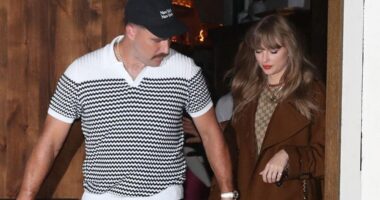When working together on “Reinas,” a period piece set in 1992 Peru, director Klaudia Reynicke and her director of photography Diego Romero found themselves having to confront the country’s tense political climate. This especially came into focus when filming the street protest scenes.
Reynicke had to find a workaround when it came to featuring communist drawings on the walls: “That’s something you can’t do in Peru because people are still very traumatized by the terrorists who were Maoist. So we had to think of specific scenes that we had to bring to Europe and do post-production special effects,” she says.
The film is Switzerland’s entry in the Oscars International Feature race and follows two sisters (Abril Gjurinovic and Luana Vega) and their family who find themselves torn between leaving their home country and staying after their absent father, Carlos (Gonzalo Molina), re-enters their lives.
To pull off the scenes where the sisters are driving through the frantic city streets, Reynicke tried to secure permits. But shooting in Peru, especially Lima, poses difficulties without a strong film industry.
“We had gone to the police and everything and they would just laugh at us,” Reynicke says. “Because they’re like, ‘Yeah, sure, you can have a permit. It doesn’t mean that people are not gonna get in. People don’t care.’”
Romero, who collaborated with Reynicke on “Love Me Tender” in 2019 and the show “La vie devant” in 2021, comes from the world of documentary filmmaking, as does Reynicke. Romero found that his approach to filming “Reinas” carried over many similar principles.
Cinematographer Diego Romero at work on “Reinas” with his more naturalistic filmmaking style.
Courtesy of Simona Pampallona
“We tried not to be invasive with the camera,” Romero says. “We leave a lot of freedom to the actors. We adapt ourselves, not the other way around. We don’t put marks on the actors. We try to feel it.”
Reynicke and Romero both describe their communication on set as “telepathic.” Reynicke has even noticed that sometimes people who have never worked with them before think they are mad at each other.
“Which we never are — but we’re kind of cold on the set with each other because we’re very focused,” Reynicke says. “But at the same time, we both always talk even beforehand … We’ve been growing together in this fiction world so it’s been a lot of fun.”
Romero jokes that “sometimes we can drive producers crazy” due to their nontraditional pre-production methods. For example, while they do shot lists, they hate storyboarding. Reynicke adds: “But when they know us, they save so much money because we never do extra time. [On set] we go so fast and we know exactly where to go.”
In transporting the audience back to the 1990s, Reynicke and Romero employed a mix of handheld and fixed camera angles to try and avoid conventional language that viewers may associate with period pieces.
“The compromise with this movie was to transport the audience to the ‘90s without making a statement,” Romero says. “You know, we didn’t want it to look like a ‘90s movie. We wanted to transport the audience with the techniques we’re using now. We wanted to try and be a little bit invisible with the light and the camera.”

Abril Gjurinovic and Luana Vega filming a tense scene in “Reinas.”
Courtesy of Simona Pampallona
In addition to the film’s deep political context, Reynicke also had her own personal reasons for telling this story.
“It was probably an unconscious way to go back to a country that I didn’t know anymore,” she says. “I left Peru when I was 10 with my mom and my stepdad, who is Swiss. I went back many times for little trips but I never went back to live there. Somehow I keep telling people that I’m Peruvian, so at some point in my life, I thought, ‘I need to do this project.’”
The first point of contact was scouting for a location similar to her grandmother’s house where she grew up.
Reynicke acknowledges how returning to Peru after so many years made her notice more unique features, adding specificity to her storytelling. However, she doesn’t focus on her emotions when getting into production.
“All my concentration is really on building the story at its best,” Reynicke says. “Once I’m ready to shoot, this has nothing to do with me anymore. This has to do with the film and its own personality and its own life with all my crew and actors.”
“Reinas” is currently playing in limited release in the U.S.












